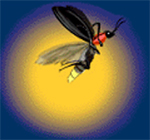Superfund Research Program

Halogenated aromatic hydrocarbons (HAHs), such as polychlorinated biphenyls (PCBs), dibenzo-p-dioxins, and dibenzofurans, are global environmental contaminants. They are present in wildlife, domestic animals, and human tissues as well as in food, water, and soil samples. Because of their ubiquitous distribution, resistance to degradation and high toxicity, these chemicals can have a significant impact on the health and well-being of humans and animals. Exposure to 2,3,7,8-tetrachlorodibenzo-p-dioxin (TCDD, "dioxin"), the most potent HAH, can produce species and tissue-specific toxic and biological effects including reproductive dysfunction, birth defects, endocrine disruption, impaired immune function and cancer.
With support from the SRP, Dr. Michael Denison at the University of California-Davis developed the Chemically-Activated LUciferase eXpression (CALUX®) system, a rapid and inexpensive recombinant cell bioassay system for the detection and relative quantitation of dioxin-like chemicals in sample extracts that is amenable for large scale screening analysis. The CALUX assay has been accepted by the international community of governments and, in 2008, was included in the US EPA’s Test Methods for Evaluating Solid Waste, Physical/Chemical Methods, known as SW-846.
UC Davis researchers, again under the direction of Professor Denison, have amplified aspects of the molecular mechanism of dioxin action resulting in dramatically improved sensitivity (10- to 100-fold) of the CALUX cell bioassay system. The importance of this innovation is improved human exposure and risk assessment. Food (fish, poultry, beef, pork, chicken) is the primary source of human exposure to these contaminants so it is imperative that exposure be quickly and inexpensively measured. Prior to the technical advances at UC Davis, concentrations of these contaminants in meat products could be evaluated only through the use of analytical methodology that utilized very expensive equipment and highly trained personnel. With the new CALUX bioassay more samples can be examined. This will provide a better assessment of the concentration distribution of the levels of contamination and allow government regulators to make better informed decisions and provisions for appropriate mitigation strategies to reduce exposure.The new CALUX bioassay has been provided to governmental, academic and commercial laboratories in six countries and is currently being evaluated for adoption as a validated screening method to detect the presence of these toxic chemicals in food and feed. From a Research Translation perspective new interest has been shown by companies who market analytical technology to food production and process businesses who analyze their commodities for these contaminants. The UC Davis Innovation Access technology transfer office has made this technology available for research and commercial licensing. Negotiations are under way to secure licenses for the marketing this technology.


